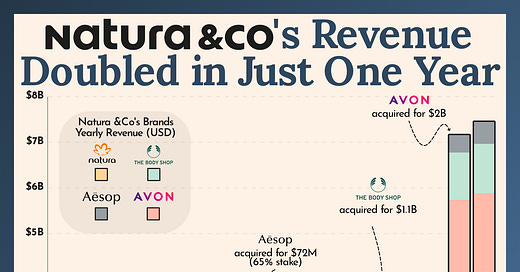Firearms, Natura &Co, and the Russian Ruble
Welcome to Latinometrics. We bring you Latin American insights and trends through concise, thought-provoking data visualizations.
Notice something different? That’s because we’ve started publishing through Substack! You can now tap our charts to view them in full resolution (for an even better reading experience, we recommend you download their iOS App).
…
Keep reading with a 7-day free trial
Subscribe to Latinometrics to keep reading this post and get 7 days of free access to the full post archives.




